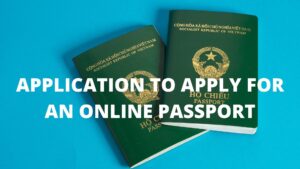
The Ministry of External Affairs dispatched a huge number of resident-driven drives to profit candidates who don’t really set up at their lasting spot of home
Passport applications can be an incredible wellspring of genealogical data, particularly about unfamiliar conceived people. The National Archives and Records Administration (NARA) has visa applications from Oct. 1795-Mar. 1925; the U.S. Division of State has identification applications from Apr. 1925 to the present Indian passport online is a movement record utilized while voyaging abroad. for instruction, the travel industry, journey, clinical participation, business purposes, and family visits.It is given by the nation’s administration and holds the personality of the Passport holder like name, Date of Birth, Place of birth, nationality, date of expiry, visa number, photograph, and signature. similar to an Identity confirmation.
The Department of State has given visas to American residents voyaging abroad since 1789, however, didn’t have the sole power to do as such until August 23, 1856, when Congress passed a demonstration (11 Statutes everywhere 52, 60) precluding other legislative elements, like state and legal specialists, from giving travel papers.
Unfamiliar travel in the nineteenth century was considerably more continuous than one may anticipate. Abroad voyagers included money managers, the working class, and naturalized U.S. residents who got back to their countries to see family members. For instance, measurements show that the State Department gave 130,360 international IDs somewhere in the range of 1810 and 1873, a larger number of than 369,844 somewhere in the range of 1877 and 1909, and more than 1,184,085 somewhere in the range of 1912 and 1925. It is obscure the number of American residents voyaged abroad with identifications given by state or legal specialists preceding 1856 or with no visa before 1918.
Although 95% of mid-nineteenth century identification candidates were men, numerous ladies additionally voyaged abroad. In the event that the candidate was to be joined by his better half, kids, workers, or different females under his insurance, their names, ages, and relationship to the candidate were expressed on the visa application. One identification was then given to cover the entire gathering. Similarly, when youngsters voyaged abroad exclusively with their mom, their names and ages were demonstrated on the mother’s visa application. Visa applications by ladies in their own names turned out to be more incessant in the last piece of the nineteenth century, and by 1923 ladies comprised more than 40% of identification candidates.
Also read: Indian passport sahayata
To successfully and proficiently use visa application records, the specialist ought to recognize the people who voyaged abroad and surmised long periods of movement. The analyst ought not consequently to expect to be an individual never voyaged abroad, on the grounds that, as shown above, unfamiliar travel in the nineteenth century was more normal than one may anticipate.
Since identifications were by and large substantial for a very long time or less, the analyst should look at the records covering the person’s whole life since the individual in question may have presented a few applications. Various applications by a similar individual may give clashing, yet helpful, hints for additional exploration.
Model: Frank Bernard applied for identification on August 9, 1900, and again on May 16, 1905. His 1900 application expressed that he moved to the U.S. on Jan. 4, 1888, onboard the boat Arabic and that he was naturalized in the region court of Kings County, NY, on July 22, 1895 (M1372, roll 562, No. 31399, Aug. 9, 1900). Marginally various dates are accounted for on Mr. Bernard’s 1905 application: February 12, 1888, for his movement and July 22, 1896, for his naturalization (M1372, roll 677, No. 103830, May 16, 1905).
Not Required. When in doubt, until 1941, U.S. residents were not needed to have a visa for moving abroad. Special cases for general principle:
Travel papers were needed from August 19, 1861, to March 17, 1862, during the Civil War.
International IDs were suggested, yet not needed, by President Woodrow Wilson’s Executive Order 2285 of December 15, 1915, which expressed that all people leaving the U.S. ought to have travel papers.
International IDs were needed from May 22, 1918 (40 Statutes everywhere 559), until the conventional end of World War I in 1921 by arrangement.
Identifications have been needed since the entry of the demonstration of June 21, 1941 (55 Statutes at Large252) and the resulting enactment.
Outsiders were Ineligible. When in doubt, the U.S. government just gave international IDs to U.S. residents.
Outsiders who had pronounced their purpose to turn into a naturalized residents could get identification in accordance with the demonstration of Congress of March 3, 1863 (12 Statutes everywhere 754) which was revoked May 30, 1866 (14 Statutes everywhere 54). Hardly any visas were given under this law, in any case.
Outsiders who had pronounced their aim to turn into a naturalized residents could get a visa as per the demonstration of Congress of March 2, 1907 (34 Statutes everywhere 1228), which was canceled June 4, 1920 (41 Statutes everywhere 751).
This segment portrays the four significant sorts of identification applications: ordinary, crisis, extraordinary, and isolated, and furthermore depicts incidentally related records.
Normal Passport Applications
Most identification applications were for “customary” travel papers. The earliest identification applications were by and large written by hand, however by the 1860s most were submitted on printed structures. The State Department gave standard visas without charge until July 1, 1862, when a three-dollar application expense was organized.
APPLY FOR PASSPORT
Step 1: visit passport in India portal
Step 2: Fill in the application structure on the web
Step 3: Make an Online Installment
Step 4: The executive will process your visa application and book an arrangement date.
Step 5: Obtain a visa through identification.


